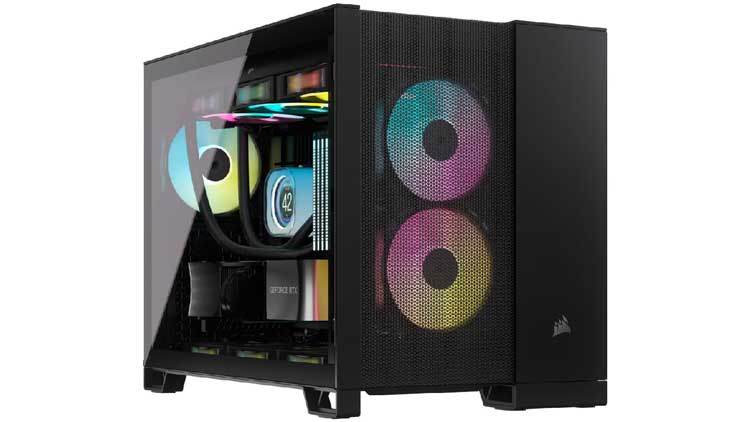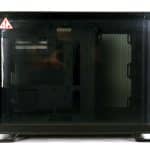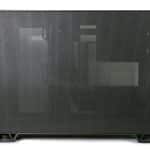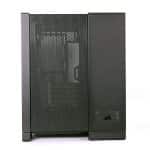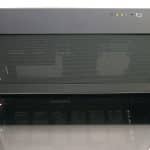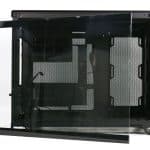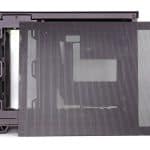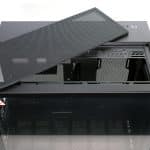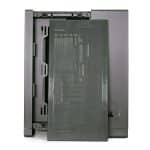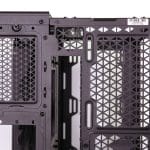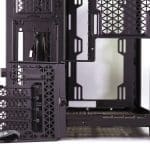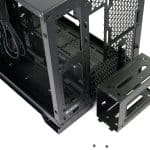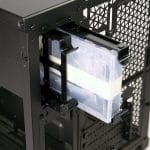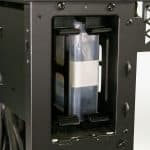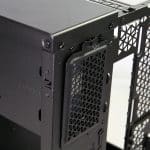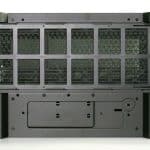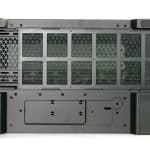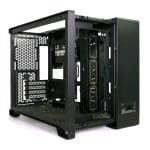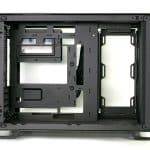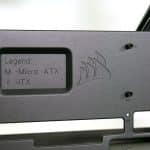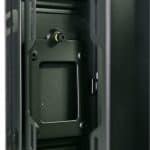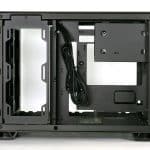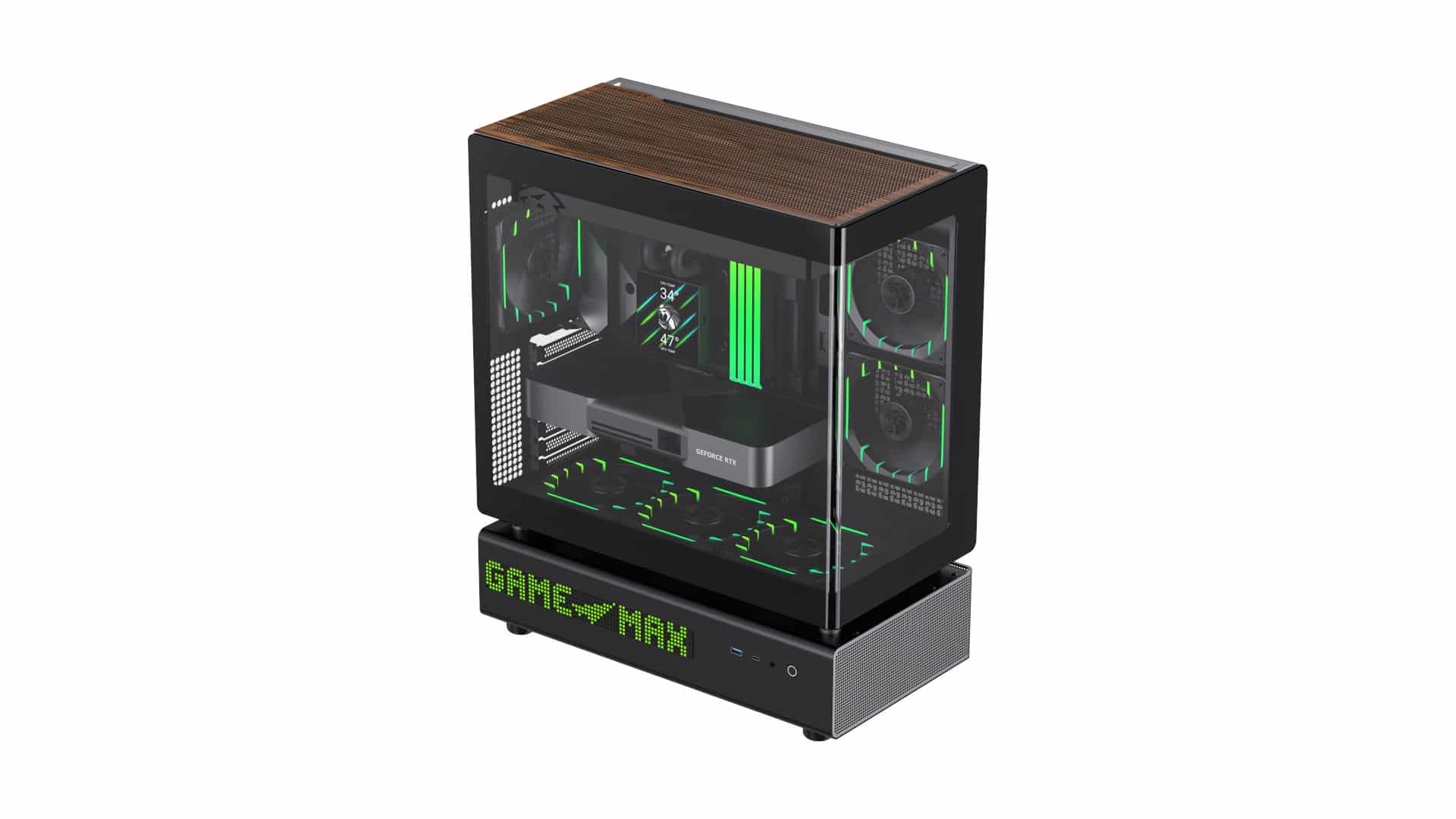Chassis Photos – Outside
The chassis’ build quality is excellent, with high-quality materials that are nice to look at and touch. The airflow variant of the chassis that we have here comes with mesh panels on five of its six sides, with the tempered glass side panel being the only exception.
Both side panels are kept in place with metal hinges that allow a small amount of swinging, as well as plastic clips and thumb screws! Small metal tabs towards the back help undo the plastic clips. The amount of force required to do that is reasonable. The tempered glass side panel is hinged on the bottom, while the mesh back panel is hinged toward the front of the chassis.
The top and front mesh panels are secured and put in place by plastic clips. Both are easy to remove and provide excellent access inside the chassis.
The 2500D’s rear features the quick-access storage compartment, the PSU bracket, a removable expansion slot panel, a 120mm fan bracket, and the motherboard’s I/O. Towards the bottom, an iQue link port and a preinstalled Velcro strap are also present.
The fan’s mounting placement can be slightly adjusted up or down to allow more space for top-mounted radiators. It is worth noting that an SFX PSU adapter comes preinstalled in the chassis, but it can be removed to accommodate standard-size PSUs. The expansion slot panel can be removed and replaced by the one included in the vertical GPU mounting kit, sold separately by Corsair and priced at $70.
The top I/O, besides the power button, includes a reset switch, which is becoming less common these days, a combo headphone/microphone jack, two USB 3.2 Gen 1 Type-A ports, and one USB 3.2 Gen 2 Type-C port. The power button is also illuminated.
The bottom of the chassis houses a removable dust filter that slides out the back. Moreover, there are provisions for mounting multiple fans.
Chassis Photos – Inside
On the inside, there is ample building room for a midi chassis, but keep in mind that it is one of the largest in its class since it is a dual chamber.
There are three cable-pass-through grommets beside the motherboard tray. This chassis is also one of the first to include provisions for the new type of motherboard, MG-RC, which supports rear-mounted connectors to achieve a cleaner look. If you opt for such a motherboard, you must route far fewer cables to the front of the chassis and have a cleaner build.
You will also find space beside the motherboard to mount two 120mm fans or up to a 240mm radiator. In addition, you can purchase yet another replacement panel that will replace this mounting bracket and provide a cleaner look.
Next to the front fan mounts, you will find two 2.5-inch drive brackets.
More fans can be installed in the front, top, and bottom, with a maximum of eight. The chassis can fit up to a 280mm or 360mm radiator at the top, a 240mm radiator on the front, a 240mm radiator on the side, and even at the bottom if desired. There is also enough room for a 180mm cooler and up to a 400mm GPU.
Corsair will also sell a bundle for about $220, including the chassis, an iQue Link hub, and two RX 120mm fans. However, we estimate that just two system fans will not cover most users, maybe except for those using an AIO with its fans.
The other chamber that houses the PSU has plenty of space for a large PSU and cable management. If you opt for the new motherboard type with back-mounted connectors, it may be necessary to connect some of them first, as access may be restricted after installing the PSU and its cables.
